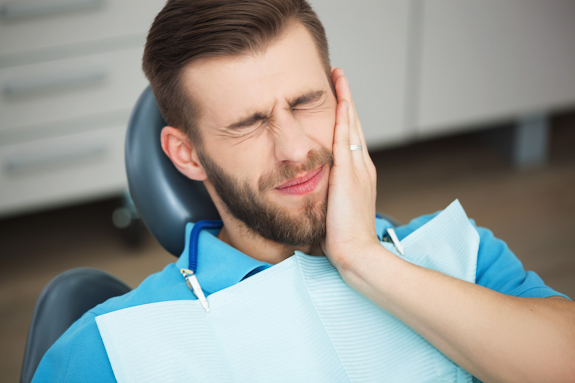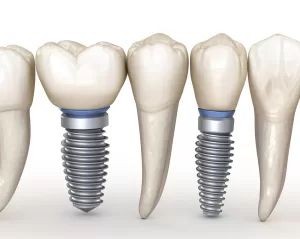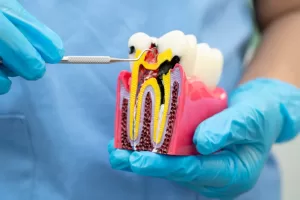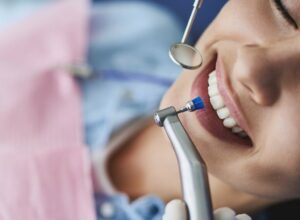Dental Emergencies: The Essential First Aid Tips
People often don’t think of tooth problems as emergencies because they usually associate emergencies with things like breaking a leg or other body parts. But dental issues can be just as serious. A dental emergency refers to any sudden and urgent situation involving the teeth, gums, or mouth that requires immediate attention from a dentist or medical professional. These emergencies can range from severe toothaches to traumatic injuries such as knocked-out teeth or broken jaws. It’s important to understand that dental emergencies need quick attention to avoid more problems and to keep our mouths healthy.
To handle dental emergencies well, we need enough information to recognize a dental emergency situation and take the best action until we reach a dentist.
Read along this blog post as we discover different dental emergencies and the proper action for each of them. We will also help you pack a dental first aid kit by telling you what you should keep in your kit.
By understanding these scenarios and having the right supplies on hand, you’ll be better prepared to handle dental emergencies confidently and effectively. So, let’s dive in.
Types of Dental Emergencies
Let’s break down the different types of dental emergencies and why they’re considered emergencies:
- Toothache: A toothache is a pain or discomfort in or around a tooth. It can range from mild to severe and is often caused by tooth decay, infection, gum disease, or trauma. It’s categorized as an emergency because the pain can be intense and may indicate a serious underlying issue that needs immediate attention from a dentist.
- Knocked-Out Tooth: When a tooth is completely knocked out of its socket due to injury or trauma, it’s considered a dental emergency. Immediate action is necessary to try to save the tooth, as the longer it’s left out of the socket, the less likely it is to be successfully reimplanted.
- Broken or Chipped Tooth: Damage to the tooth structure, such as a crack, fracture, or chip, can occur due to trauma, biting down on hard objects, or decay. This can expose the sensitive inner layers of the tooth and cause pain or discomfort. It’s categorized as an emergency because it can lead to further damage or infection if left untreated.
- Lost Filling or Crown: If a dental filling or crown becomes dislodged or falls out, it leaves the affected tooth vulnerable to further damage or decay. Prompt replacement or repair is needed to protect the tooth from additional harm. It’s considered an emergency because leaving the tooth unprotected can lead to complications.
- Abscess or Dental Infection: An abscess is a pocket of pus caused by a bacterial infection in the tooth root or surrounding gum tissue. It can cause severe pain, swelling, and fever and requires immediate treatment to prevent the infection from spreading to other parts of the body. It’s categorized as an emergency because of the risk of serious complications if left untreated.
- Soft Tissue Injuries: Injuries to the lips, cheeks, gums, or tongue, such as cuts, lacerations, or puncture wounds, can result from accidents, falls, or trauma to the face. These injuries may bleed heavily and require first aid to control bleeding and prevent infection. They’re considered emergencies because they can be painful, affect speech and eating, and may require stitches or other medical attention.
Understanding these dental emergencies and their reasons for being categorized as emergencies is essential for knowing when to seek immediate care from a dentist or medical professional. Prompt treatment can help alleviate pain, prevent further damage, and preserve oral health.

First Aid for Dental Emergencies
Here are the best first-aid actions for each type of dental emergency:
- Toothache: Rinse your mouth with warm water and use dental floss to remove any trapped debris. Take over-the-counter pain medication if necessary and apply a cold compress to the outside of the mouth to reduce swelling.
- Knocked-Out Tooth: Handle the tooth by the crown (top part), avoiding touching the roots. Rinse it gently with water if dirty, but do not scrub or remove any attached tissue. Try to reinsert the tooth into its socket or store it in milk or saliva until you can see a dentist.
- Broken or Chipped Tooth: Rinse your mouth with warm water to clean the area and apply gauze to any bleeding. Save any broken pieces and rinse them with water. Use a cold compress to reduce swelling.
- Lost Filling or Crown: Clean the affected area and apply dental cement or temporary filling material from a pharmacy to cover the exposed tooth surface. Avoid chewing on that side of the mouth and see a dentist promptly for a permanent restoration.
- Abscess or Dental Infection: Rinse your mouth with warm saltwater to help alleviate pain and reduce swelling. Take over-the-counter pain medication as directed and seek dental care promptly to prevent the infection from spreading.
- Soft Tissue Injuries: Clean the wound gently with warm water and apply pressure with sterile gauze to control bleeding. Use a cold compress to reduce swelling and seek medical attention if the injury is severe or does not stop bleeding.
Remember, these first aid measures are temporary solutions to alleviate pain and prevent further damage until you can see a dentist for proper evaluation and treatment. If you’re unsure about what to do or if the situation seems severe, don’t hesitate to seek professional help immediately.
READ MORE: Dental Examinations At Brookdale Dentistry
Why Do We Need a Dental First Aid Kit?
Having a dental first aid kit at home or work is essential for several reasons. Firstly, dental emergencies can happen unexpectedly, and having the necessary supplies readily available can help you respond quickly and effectively, reducing pain and preventing further complications. Additionally, access to a dental first aid kit can provide peace of mind, knowing that you’re prepared to handle common dental issues as they arise.
Moreover, dental emergencies may occur outside of regular dental office hours or in locations where professional help is not immediately accessible. In such situations, a dental first aid kit can serve as a temporary solution to alleviate discomfort and stabilize the condition until you can seek proper dental care.
Furthermore, a dental first aid kit can be beneficial for individuals with pre-existing dental conditions or those who are at a higher risk of experiencing dental emergencies, such as athletes or individuals with braces or dental prosthetics. By having a well-stocked first aid kit tailored to their specific needs, they can manage unexpected dental issues more effectively.
Essential Items to Keep in a Dental First Aid Kit
A dental first aid kit should contain essential items to address common dental emergencies and provide temporary relief until professional help is available. Here are some key items to include:
- Dental floss: Useful for removing debris stuck between teeth, causing discomfort.
- Cotton balls or gauze pads: These can be used to apply pressure to control bleeding or to cushion a broken tooth.
- Dental wax: Helps cover sharp edges of broken teeth or orthodontic appliances to prevent irritation.
- Temporary filling material: Useful for covering exposed tooth surfaces or lost fillings until a dentist can provide permanent repair.
- Dental cement: Helps secure loose crowns or bridges temporarily.
- Pain relievers: Over-the-counter pain medications like ibuprofen or acetaminophen can help alleviate toothache or discomfort.
- Salt packets: Useful for making a saltwater rinse to soothe sore gums or clean oral wounds.
- Cold pack: Provides relief from swelling and pain caused by dental injuries or infections.
- Disposable gloves: Protect both the patient and caregiver from cross-contamination.
- Contact information: Include the phone number of your dentist or emergency dental services for quick access to professional help.
By having these essential items in your dental first aid kit, you’ll be better prepared to manage dental emergencies promptly and effectively. Remember to check and replenish your kit regularly to ensure that all supplies are up-to-date and readily available when needed.
Wrapping It Up
Stay prepared for dental emergencies. Understand what to do and keep a well-stocked dental first aid kit on hand. With the right knowledge and supplies, you can handle emergencies confidently and protect your oral health.
Need advice? The best dentist in Vancouver, offering services like Teeth Whitening, Dental Veneers, Dental Implants, and Dental bridges, is at Brookdale Dentistry Clinic. Our top-rated dentists are always available to answer your questions. And if you ever face a dental emergency, don’t worry! Just give us a call, and we’ll provide the prompt and professional care you need.



